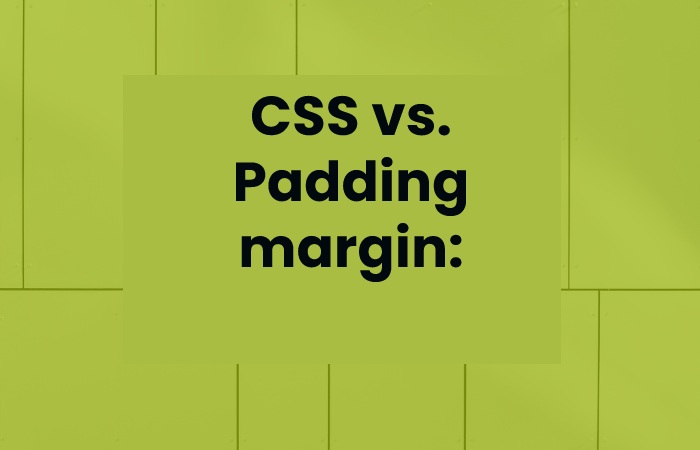Table of Contents
CSS vs. Padding margin
If you are new to CSS
You may have heard the words “margin” and “padding” but are not sure what they mean or how to use them in your website design.CSS vs. Padding margin
Concepts consume to do with the same thing in CSS. However, there are nearly important fundamental differences in their use. Once you understand them, you remain equipped to make better design decisions.
What is the difference between the middle of margin and padding in CSS?
CSS vs. Padding margin
A margin is a space around an item, and padding refers to the distance between an article and the content it contains.
Source
The margin is on the outside of two adjacent elements. Each side of the element has a margin size that you can change individually. When making the space, the margin pushes out adjacent elements.
On the other hand, the padding remains placed inside the border of an element. Create space. The padding increases the size of the item or reduces the content inside. By default, the size of the element increases.
If you want to create a space by shrinking the content, set the value of the box-sizing property to -box
When to use margins or padding?
When adjusting the layout of your layout, you must consider whether to change the margins or the padding to achieve the visual effect you want.
CSS margins determine the space around an element, so the margins would remain used to move a part up or down on the page and the left. Or the right. If the width of your page remains fixed, centering an element horizontally is very easy: just set margin: auto.
CSS vs. Padding Margin
I would similarly use margins to define the distance between neighbouring elements. For example, use margins to add space between images or between an idea and the text deion below.
On the other hand, a negative margin value would allow you to overlap elements. You can also use a negative margin to create a header element in a container with padding values set to keep the other details aligned.
CSS padding
CSS padding determines the appearance and position of Deson elements in a container. You would change the padding to create a space between a part and the container’s border or the frame. It would also show the bottom of the container around the item inside.
Padding remains also used to change the size of an element. When you increase the padding value, the text will keep the same size, but there will be more space around it. The item determination also fills more space inside the container.
The CSS Box Model
In CSS, the box model remains used for layout and page layout. All the HTML elements in a document remain packaged in a box.
A CSS area consists of a margin, border, padding, and content, as shown below:
Source
Applying the height and width of your elements will be easier once you understand the CSS box template. To ensure proper alignment, you will only have to do a few simple calculations. However, if you don’t know how the box model works, you might end up with a sloppy design.
CSS vs. Fill vs. Border
The margin and padding are always part of an element, even if it is not visible. It cannot be very clear for beginners.
Source
Both content blocks do not have a border, but the margin and padding still apply.
Now let’s see the Difference between CSS margin codes and padding codes.
How To Add Margins In CSS
Each element has four margins to declare: top, right, bottom, and left.
To set the margin area on one side of an element, use the margin-top, margin-right, margin-bottom, and margin-left properties. You can also set the margin on all four sides utilizing the short property margin
You can specify the margin property with one, two, three, or four values depending on which side you want to apply it to. If you wish to equal margins on each side, you only need to use one value. Otherwise, the order of the values is crucial:
Four discounts apply up, right, down, then left.
Three values are applied up, right, and left, then down.
Two values apply up to and down, then right and left.
Choose One Of These 10 Free Crm Systems To Raise Your Customer Management
Water-Based Cosmetics: Light Texture and Hydrated Skin

